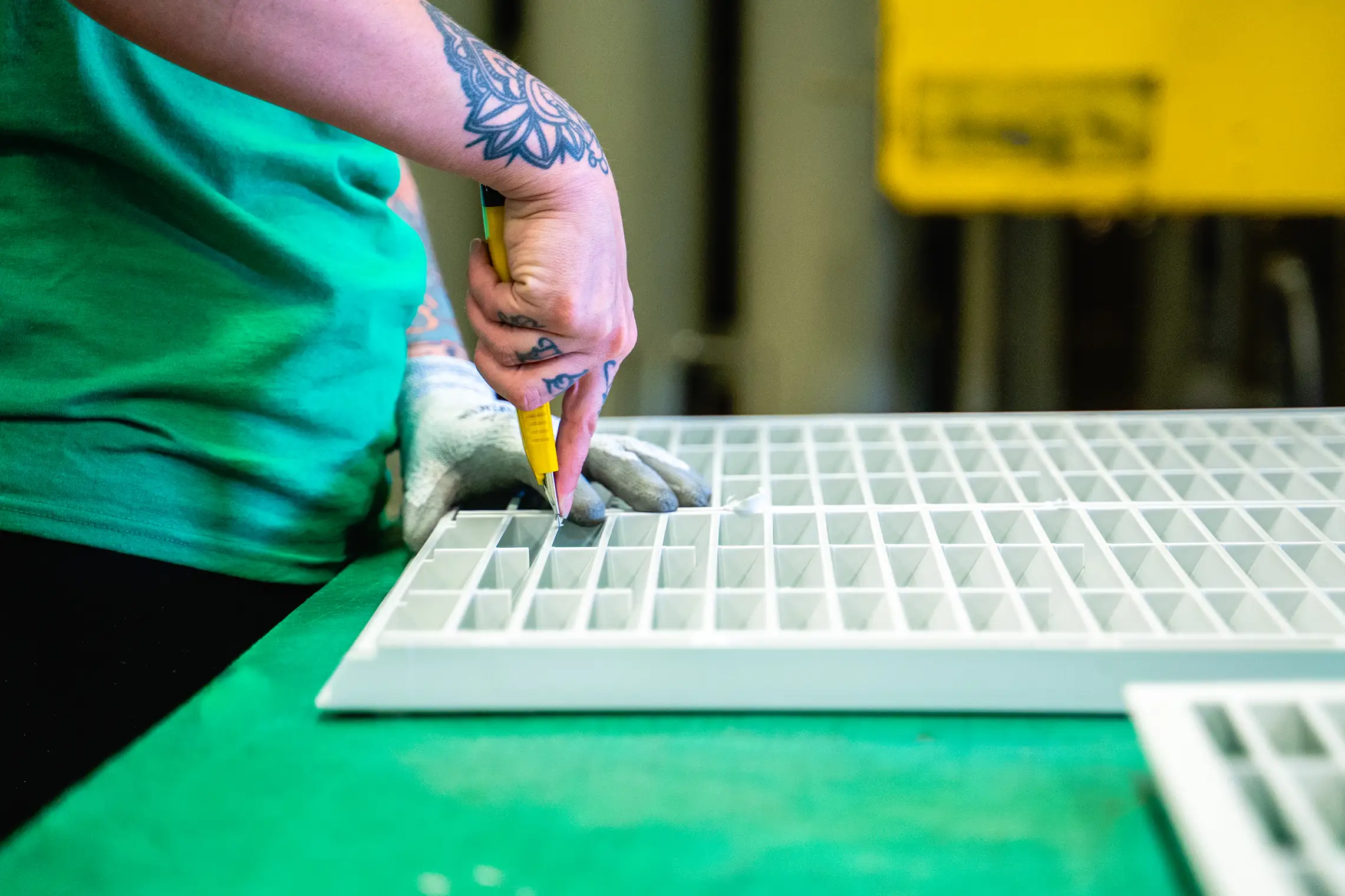As we’ve said before on the topic of injection molding – there’s more than one way to bake a cake. Today’s competitive landscape means everyone is looking for any edge they can get to win. Considering structural foam molding as an alternative to reaction injection molding (commonly known as RIM manufacturing) can:
- Offer more flexibility in volume and materials
- Create better sustainability practices
- Increase ROI and save money on your bottom line
Material Flexibility and Increased Volume
Thinking about RIM vs. structural foam molding? Structural foam is very robust when it comes to material choices. Reaction injection molding utilizes more expensive raw materials due to the usage of thermoset polymers which can’t be recycled. Typical volumes for the RIM process are relatively small, ranging from 25 to 2,000 parts. On the other hand, structural foam can be used with nearly any thermoplastic, including thermoplastic rubber, that add strength to the final molded part. In addition, structural foam has amongst the widest production range, from 100 to 100,000+ parts.
Sustainability Practices
Unfortunately, the RIM process is not conducive to sustainability. Thermosets cannot be recycled due to the permanent chemical bonds that are formed when the material is molded. Meanwhile, the thermoplastics used in structural foam molding are easily recyclable – in fact, DeKALB processes millions of pounds of recycled resin materials annually.
ROI: Saving on Your Bottom Line
Savings with structural foam can come from a variety of areas, including multiple part integration (inserts, brackets, fasteners, hinges, etc.) which eliminate expensive secondary operations. The ability to mold in louvers, holes and threads further drives down your cost. Outside of cost reductions, both material flexibility and sustainability add to the positive ROI of structural foam.
Do you have an application you would like to explore as a structural foam process? Contact us and we will send you a sample kit including examples from above.

